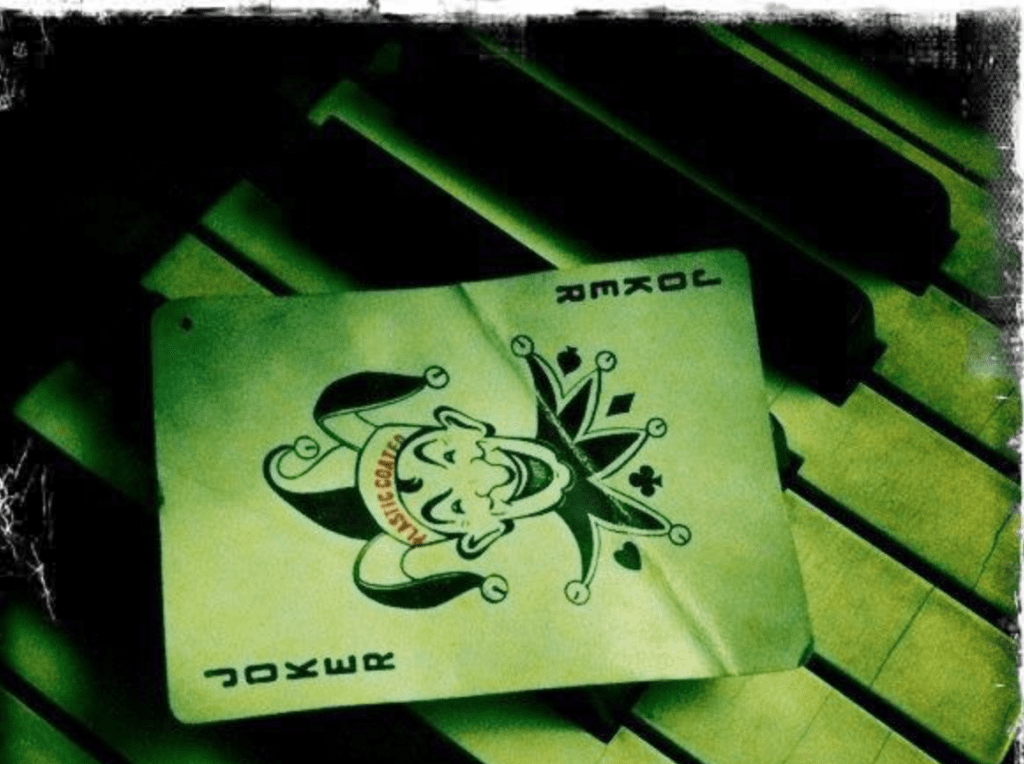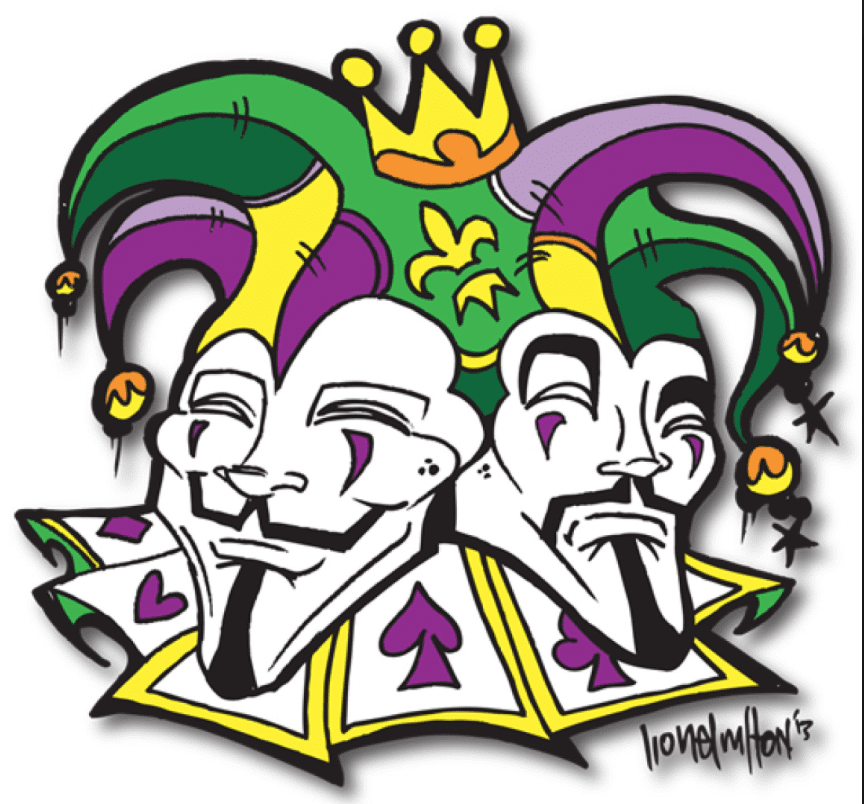Sometimes you need to break the tradition in order to keep the tradition alive and the accepted tradition breaker is the clown. – Hopi Scholar Michael Kaboti
This was one of the first teachings I learnt from the deep cultural wisdom of the Hopi People. The western mindset is built on having answers, whereas traditional cultures have reserved a special place for the unknown, often called reverently the Great Mystery. We are living in potent – yet uncertain – times, and the trickster/clown archetype has some powerful medicine that will help us dive into the depths of this uncertainty in a fearless way.
The trickster teaches us that sometimes it is better to wonder than it is to know. Accepting this truth can be exciting and humbling for us as humans. The words human, humor, and humility, all come from the same linguistic root for a good reason. We are noble beings when we are in balance with our folly. When we become arrogant and rigid is when we often create the most trouble for ourselves and those around us. When we get too high on our horse, the trickster is the one who will knock us down a notch and remind us to laugh at ourselves, otherwise others surely will.
What is the Trickster?
The distinction between clown and trickster is subjective; however, generally, tricksters are considered more mythic and archetypal, whereas clowns are their more worldly counterparts. Thus, the trickster comes in many forms, including clowns, merry-makers, buffoons, and jesters – they can be playful, mischievous, disrespectful, backward, paradoxical, or even obscene. This archetypal energy can play out through various circumstances in our lives, and make us feel like we are the butt of a cosmic joke.
Tricksters cross boundaries in society, playfully disrupting normal life. This bending of the rules usually appears in the form of tricks or thievery. Tricksters openly mock authority, and can be both cunning and foolish. They break rules, boast, and play tricks on those around them.
Take, for example, the great American contribution to clowning, the hobo-clown. We laugh at him as he slips on a banana peel and everything goes wrong in his life. This form of slap-stick humor teaches us to laugh at life’s challenges and not take ourselves so seriously. Sometimes things go our way and other times it can seem like the whole universe is conspiring against us.
Once you can laugh at a situation it will no longer have power over you. – Slave Adage
Tricksters Around the World
Tricksters and clowns exist in almost every culture around the world. Many Native American Stories have the trickster embodied as a coyote, and Coyote Tales were central to long nights around the fire during winter months. The Lakota call their trickster, Heyoka, and he is often seen sitting backwards on his horse. The Azande People in Central Africa have Ture, a trickster that is a spider who can change form into any animal. Ture brought food, water, and fire to the people, but he is always tricking people, stealing from them, serving his own interests, acting crudely, and being disrespectful.
Oftentimes we are grateful for the gifts and revelations the trickster brings us without actually condoning the behavior of this confusing character.
These characters that don’t neatly fit into traditional categories, or can’t simply be called good/bad, are the characters who fall in the trickster category. Often we are grateful for the gifts and revelations the trickster brings us without actually condoning the behavior of this confusing character.
Hopi Clowns in Action
Writing about Hopi ceremonial culture is very delicate because they have strong oral tradition, but Hopi artist and scholar Michael Kaboti explained the importance of sharing the clown wisdom everywhere that it has been forgotten. So I am happy to share a magical experience I had at a sacred Hopi dance in honor of my friendship with Michael. The Hopi Mesas are beautiful places with ancient wisdom, but it is not respectful to visit without an invitation, or someone that can guide you through proper protocols.
The villages sit high above the painted desert with stone buildings that are hundreds of years old. Some structures are said to be over a thousand years old, and the houses surround a central plaza where the ceremonial dances take place. People crowd the plaza and sit on the roofs under the hot Arizona sun to learn and remember aspects of their ancient culture.
During the dance, at a certain moment, the clowns enter the plaza. Boisterous, disrespectful, talking loud, eating, throwing food, maybe even desecrating the altar and acting completely oblivious to the fact that there is a sacred ceremony happening. The audience oscillates between laughter and a feeling of anger as these clowns act increasingly rude and disrespectful.
Confronting Ignorance
As the ritual theater unfolds, the Kachina Spirits enter the plaza in full regalia, decorated from head to toe with yucca whips and gourds of holy water. They have come to reprimand these unruly clowns and purify them from their ignorance. When the clowns see the Kachinas, they run into the audience to get away. The audience cheers as the Kachinas follow them in the audience. What few people notice though is that the Kachinas are throwing the water on the audience as they run after the clowns.
The clowns represent the ignorance of us humans, the childishness that we exhibit, the way that we can be so self-absorbed, so arrogant.
When the Kachinas chase the clowns, it is the humans watching that receive the purification. This deep cultural wisdom allows people to laugh at themselves indirectly, and be purified of their own judgment and anger through ritual theater. A beautiful aspect to this dynamic is that the clowns are considered to be the parents to the Kachinas. In this way, there is also a reverence for the child-like innocence within us, that we must strive to evolve, but we will always be humans full of folly.
Profane and Sacred
The trickster makes us examine the profane and the sacred. It brings the shadow to the light. Both the profane and the sacred are two sides of the same coin, and they often define each other. French sociologist, Émile Durkheim, considered this to be the central characteristic of religion. He believed that the sacred represents the interests of a group or community, which is embodied in cultural symbols. The profane involves the opposite, the not-so-special, the mundane, the human day-to-day individual concerns. Durkheim made a very important observation that is not part of conventional wisdom, which is that the sacred/profane dichotomy is not equivalent to good versus evil. The sacred can be good or evil, and the profane can be either as well. We do not live in a world of absolutes, there is much grey area in between. This is the place where the trickster taunts us, pushes us out of our comfort zone and helps us evolve.
Religion is a unified system of beliefs and practices relative to sacred things, that is to say, things set apart and forbidden. – The Elementary Forms of Religious Life by Émile Durkheim
Only when we confront our unknowns and our ignorance, and accept them, can we embrace new ideas. We can often become so attached to what we know that there is no room for anything else to enter our consciousness, and this is usually when we find ourself face-to-face with the trickster archetype. The antidote to too much pride is a dose of humility, and the trickster is more than happy to laugh at your human-folly in case you should ever forget it.
Developing a Relationship with the Trickster
Sorrow, loneliness, doubt, anger, depression, confusion, and many other shadow emotions, are universal to all human experience. This is why we laugh at the sad-clown who is down on his luck, because we can all relate to these feelings. Our ability to have compassion for these aspects of being human, and have a relationship with these expressions of the self, is the key to personal mastery.
Losing control, or melting down, may be embarrassing, but we cannot always be in control of circumstances and sometimes breaking down is essential to transformation. Sometimes we are as helpless and foolish as a clown, and the only way to respond is with compassion, humility, and humor. The ability to laugh at ourselves is invaluable in this inevitable process, this is central to the medicine of the trickster.
Trickster Medicine in Modern Times
It is enlightening to look at the chaos of our modern times from the perspective of the trickster. We have politicians completely disconnected from their role as representatives of the people. We have extractive industries wreaking havoc on our sacred environment, desecrating the waters, air, and land. We can feel ourselves losing control of this monster that has become modern society, and the feeling of helplessness grows.
We are like that crowd in a Hopi Village watching the dance. It is sometimes funny to watch, but we are also fighting this deep anger and sorrow for what has become of our society. We point fingers at the politicians, and the corporations, yet they are manifesting an aspect of humanness that is within all of us. How do we shift our relationship with these shadow parts of ourself? How do we accept this inevitability, while also purifying ourselves and returning to our rightful place of humblest servants to this wild and beautiful creation that we are part of?
Nowhere to Run
Sometimes a healthy dose of humor, deep felt compassion, and acceptance for all things that are beyond our control is the best way to shift the paradigm by healing from the inside. There is nowhere to run, when the trickster has come for us, we must learn to accept this wisdom regardless of how uncomfortable it may be.










